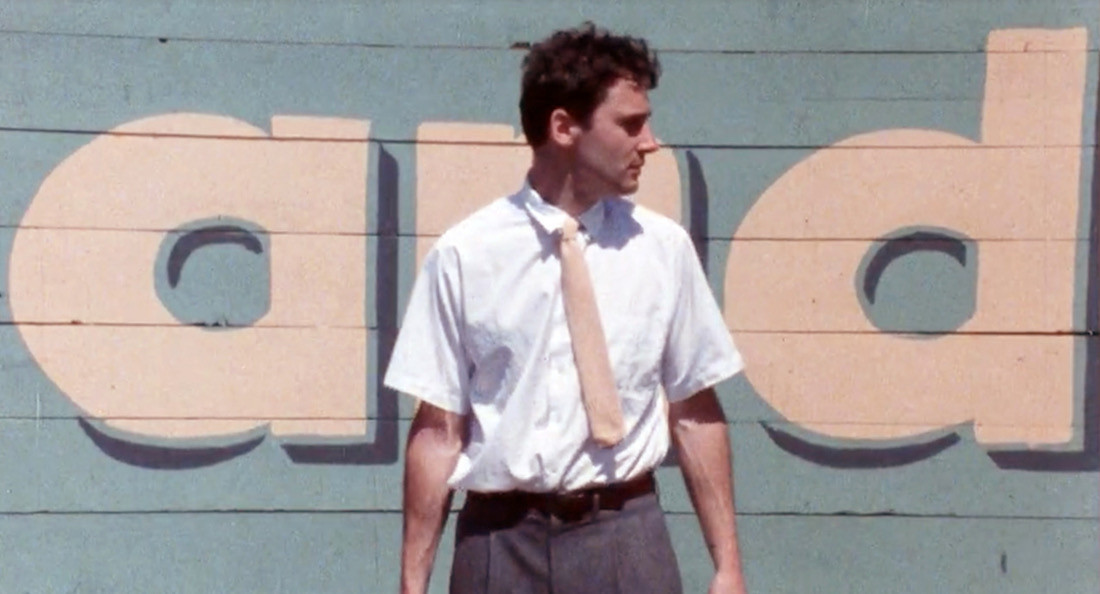‘Still obscure as hell’
Origin Stories: John Paizs
For years, John Paizs has been a cult figure among cult figures. The filmmaker, a key creator in the early days of the Winnipeg Film Group, created work that was subversive, funny and visually inventive. His trio of half-hour shorts, The Three Worlds of Nick (1981 to ’84), and his first feature, Crime Wave (1985), are cutting-edge works of underground ’80s cinema. They’ve also been, until recently, really difficult to actually see.
But with the release of a high-definition remaster of Crime Wave on Apple TV and Nick’s 2017 DVD release, Paizs’ work is finding a deserved new audience among film fans. He was even invited to participate in the prestigious Sight and Sound Directors’ Poll in 2022. Paisz says the renewed interest in his work is “equal parts surprising and great.”
“I just spent 20 years (as director in residence) at the Canadian Film Centre (CFC) where in all that time I’d say easily under ten of the students had actually known of me and my work prior to coming there,” Paizs says in an email to The Uniter. “This, at the top film school in Canada! Bottom line, I’m still obscure as all hell, and probably always will be.”
Paisz was born in Winnipeg in 1957 to Hungarian refugee parents and grew up in a two-storey frame house on Lansdowne Avenue in the North End with both parents, an older sister and occasional boarders renting the upstairs bedrooms.
A quiet kid with an eye for creativity, his mother encouraged him by saving paper grocery bags and milk cartons for arts and crafts. While in preschool, he fashioned the milk cartons into miniature buildings, creating an elaborate city featuring a working drawbridge.
The renters upstairs were also an influence. “One young fellow ... showed me one day how to draw a flying saucer, a ’50s-style one like right out of Earth vs. the Flying Saucers, which of course was too cool,” he says.
“(One of the boarders) moved away and left behind a cache of ’50s and early ’60s pulp paperbacks, you know, with the lurid covers. These we kept on a shelf under the basement steps ... I remember standing there poring over them as a somewhat older kid, eyeing the sensationalistic scenes vividly rendered there on the covers. That art style and those scenes really imprinted themselves onto me. And many years later, this early fascination for them, for that aesthetic, would resurface in my film Crime Wave.”
Paizs’ love of drawing led to him making short animated films using his father’s 8mm home-movie camera. As a teen, he was “seriously into animation, and I went from high school to working as an animator at Kenn Perkins Animation, a local animation studio in Winnipeg.” He switched to live-action filmmaking while at the University of Manitoba’s School of Art and “over the next six or so years I made my body of independent films.”
Those early indie films were scrappy affairs, labours of love where Paizs wore many hats, including star, director, cinematographer and editor. He says that DIY process was fruitful but created problems, too.
“One thing that amazes me, looking back now, is how apparently utterly oblivious I was to the multitudinous potential slings and arrows of outrageous fortune that my creative process seemed purpose-built to rain down upon my creative output ... I virtually never rewrote, revised, recut or asked for feedback. Case in point: Crime Wave’s world premiere at Toronto’s Festival of Festivals was also in effect its first and only test screening!
“And, how did I get away with it, this mad methodology in movie-making of mine? Well, I didn’t actually. I ended up reshooting an entire new last twenty minutes for Crime Wave following the premiere.”
But almost immediately, Crime Wave became a hard-to-find gem. The film’s distributor declined to release it theatrically, which left Paizs in a contractual dispute and a career rut. However, he got a new start directing episodic television via The Kids in the Hall in 1991.
“Bruce McCulloch just happened to catch (Crime Wave) on pay TV and next thing I knew I was being flown from Winnipeg to Toronto to meet the Kids and to discuss directing for them.” This led to other TV work, including episodes of John Woo’s Once a Thief and ’90s Can-Con kids’ classics like The Adventures of Shirley Holmes and Maniac Mansion.
Following his second feature, 1998’s Top of the Food Chain starring Campbell Scott (Big Night, Singles) and Tom Everett Scott (That Thing You Do!, 13 Reasons Why), Paizs began his 20-year tenure at CFC. When CFC (and the rest of the world) closed its doors during the COVID-19 pandemic, Paizs returned to Winnipeg to spend time with his elderly parents.
Now that his work has become more easily accessible (all of his shorts are now available to rent for between $1 and $4 each on indie Canadian streaming platform Vucavu), Paizs is enjoying the unexpected bump in viewership – and he’s still working in film.
“Since arriving back in Winnipeg, I was offered the terrific opportunity to work on a feature doc on Ukrainian-Canadian artist and writer William Kurelek,” he says. “It’s a passion project of multiaward-winning director-writer-producer Halya Kuchmij and is being produced by Merit Motion Pictures of Winnipeg, with shooting to commence next year. Telefilm is backing the project, and I’m delighted to be onboard.”
Published in Volume 78, Number 10 of The Uniter (November 16, 2023)








